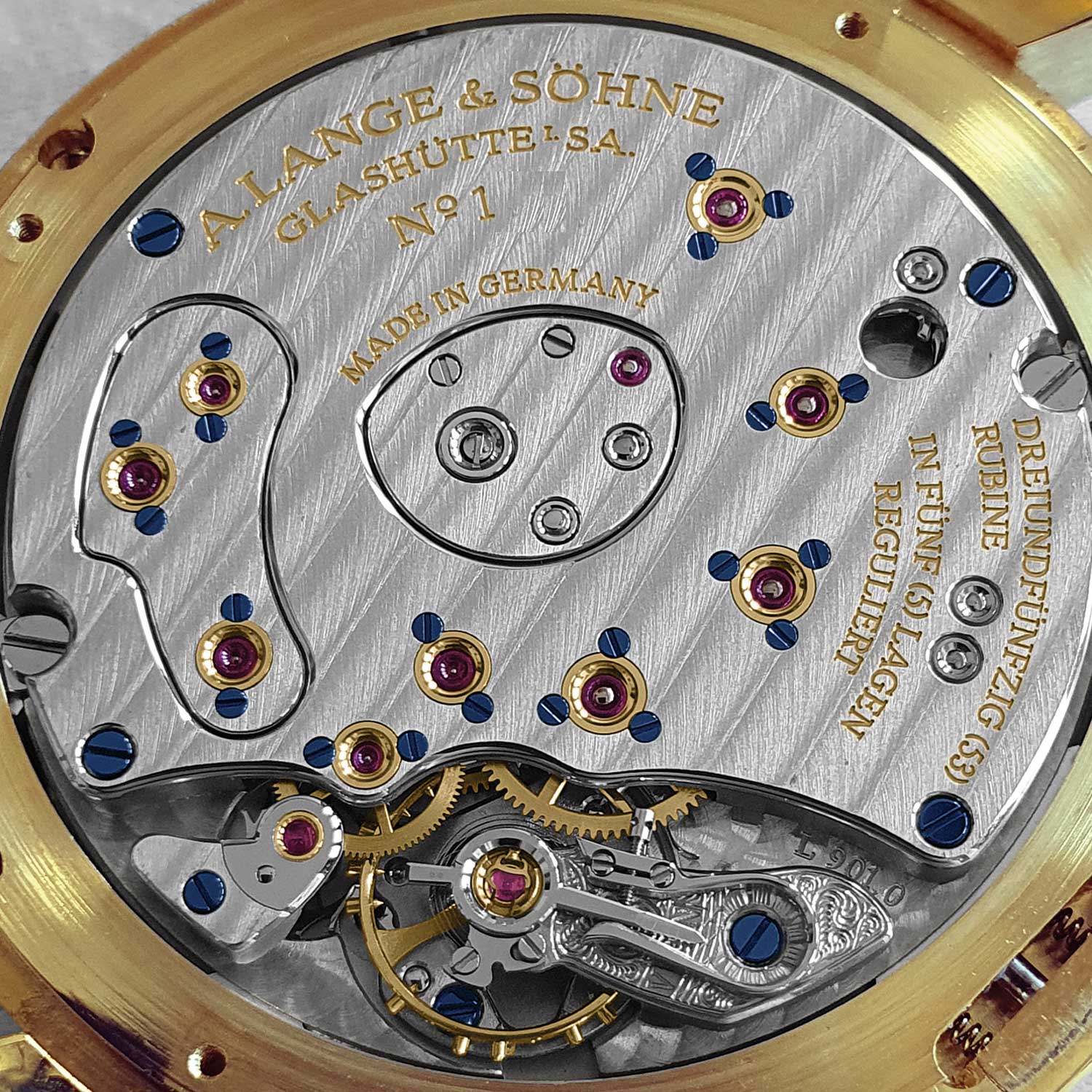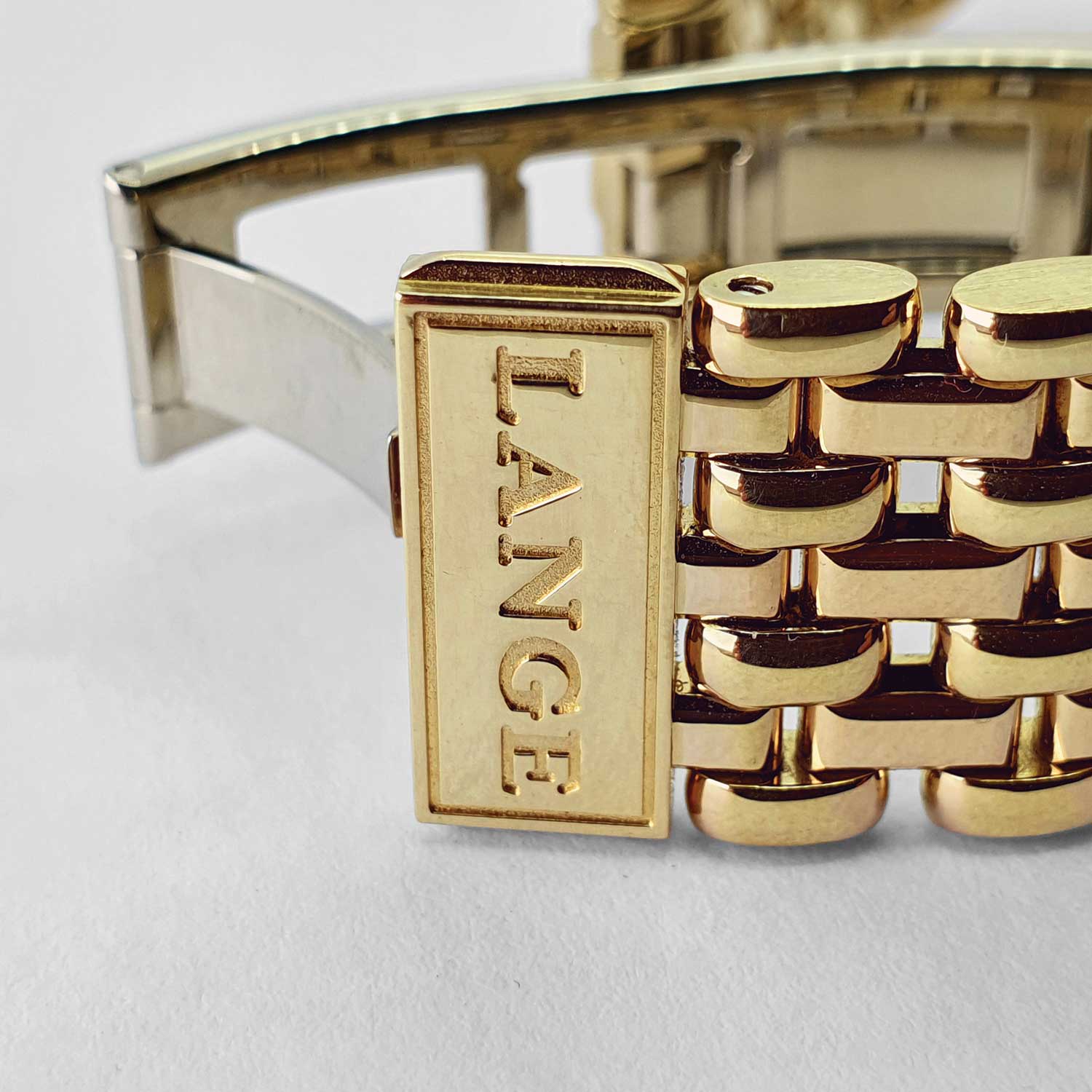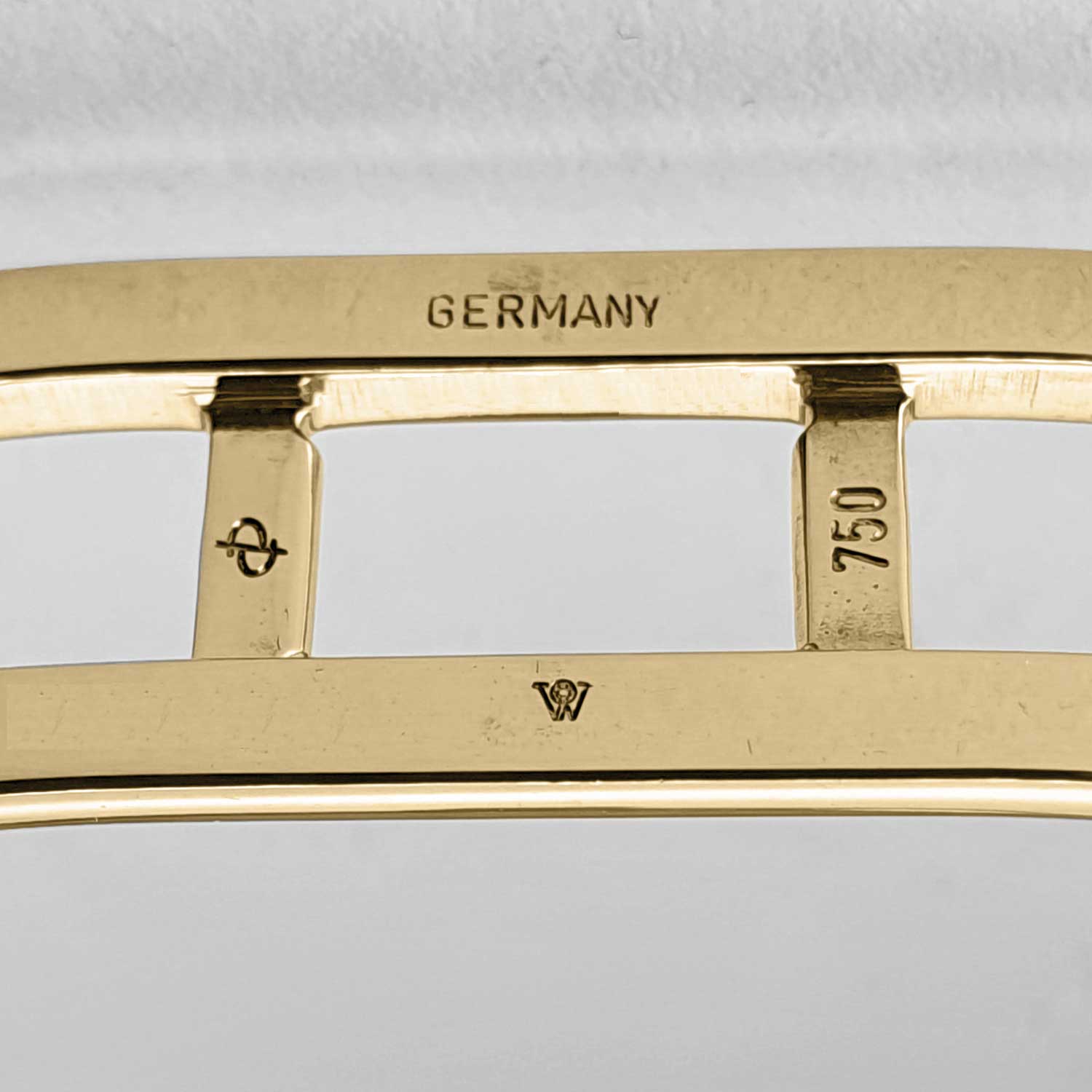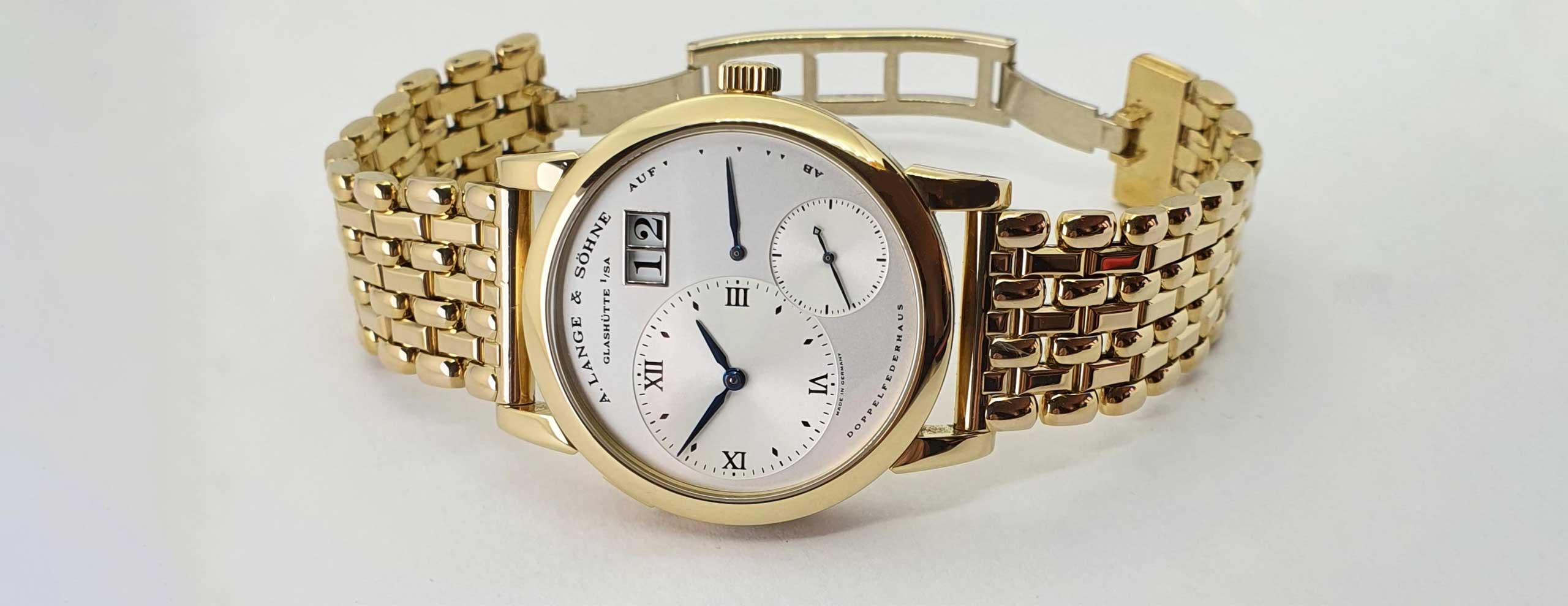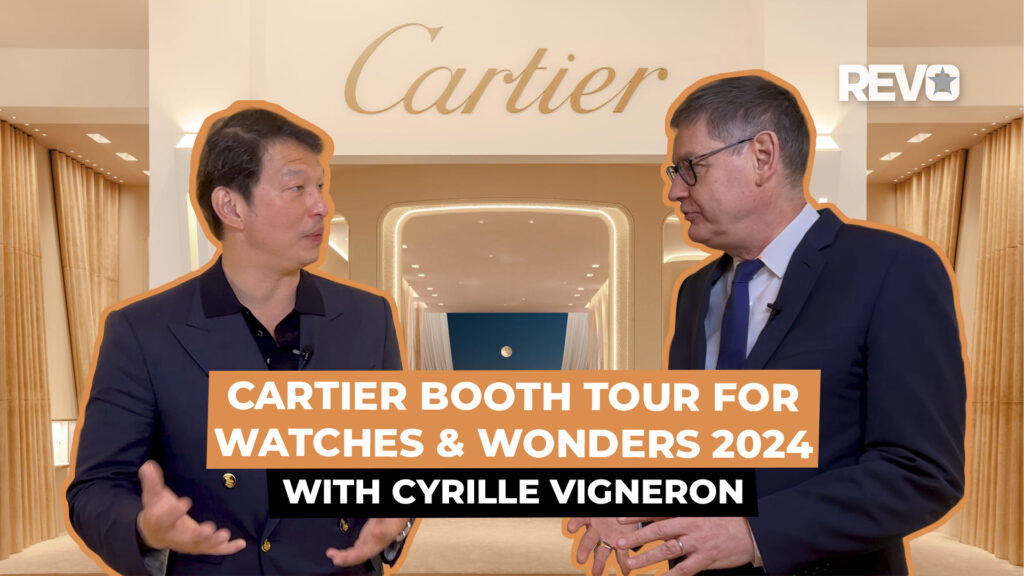The story of one collector’s search for his grail watch, a 1994 Lange 1 on a Wellendorf bracelet.
It was a long road for me to the most classic A. Lange & Söhne watch — more than 20 years, to be precise. And I am not talking about a Lange 1 in stainless steel, as some of you might think, but the Lange 1 in 18K yellow gold with a solid caseback and matching gold bracelet from Wellendorff. In my view, this is the most classic, beautiful and important watch of the modern era from the Glashütte watch brand.
Right from the start, the A. Lange & Söhne Lange 1 was one of the most exclusive watches par excellence. Then a newly resurrected brand in 1994, A. Lange & Söhne stood for the highest luxury. The watches were unmistakably very expensive, and the brand was — and still is — a brand for the few. Personally, the high price tag of Lange watches always frustrated me, because, as an enthusiast, you quickly had to get used to the idea that you couldn’t own the things you really liked and found beautiful.
Rebirth in Dresden, Germany
The story of A. Lange & Söhne’s comeback in watchmaking is well known. Nationalized during the Soviet occupation of East Germany, the family-run Lange company ceased to exist. Its revival after the Cold War was led by watch industry luminary Günter Blümlein and Walter Lange, great-grandson of the brand’s founder, Ferdinand Adolph Lange.
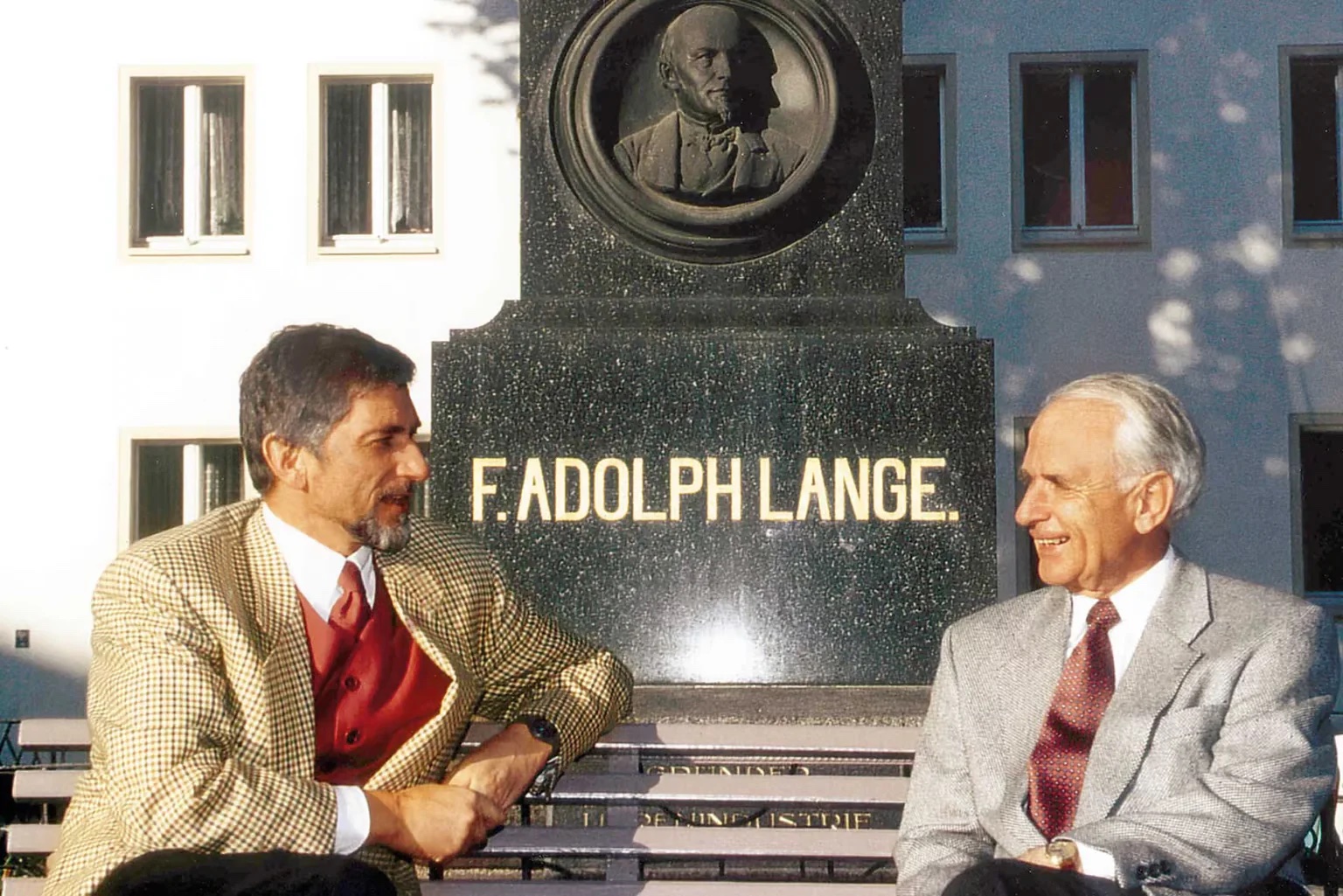
1991: On the left, Günter Blümlein, the man who singlehandedly revived IWC and Jaeger-LeCoultre, in the post Quartz Crisis period and, later, A. Lange & Söhne and Walter Lange
The date chosen for the rebirth of A. Lange & Söhne and the presentation of its first four watches was October 24, 1994. The historic event took place in Saxony’s capital city, Dresden, Germany, in the Royal Palace or “Residenzschloss,” near the Semper Opera House and the Dresden Zwinger. The presentation showcased the all-new Lange collection and, when the curtain was raised, the audience saw four attractive wristwatches all made in yellow gold: the very classic Saxonia, the small and beautiful Arkade, the amazing Tourbillon Pour le Mérite and the astonishing Lange 1.
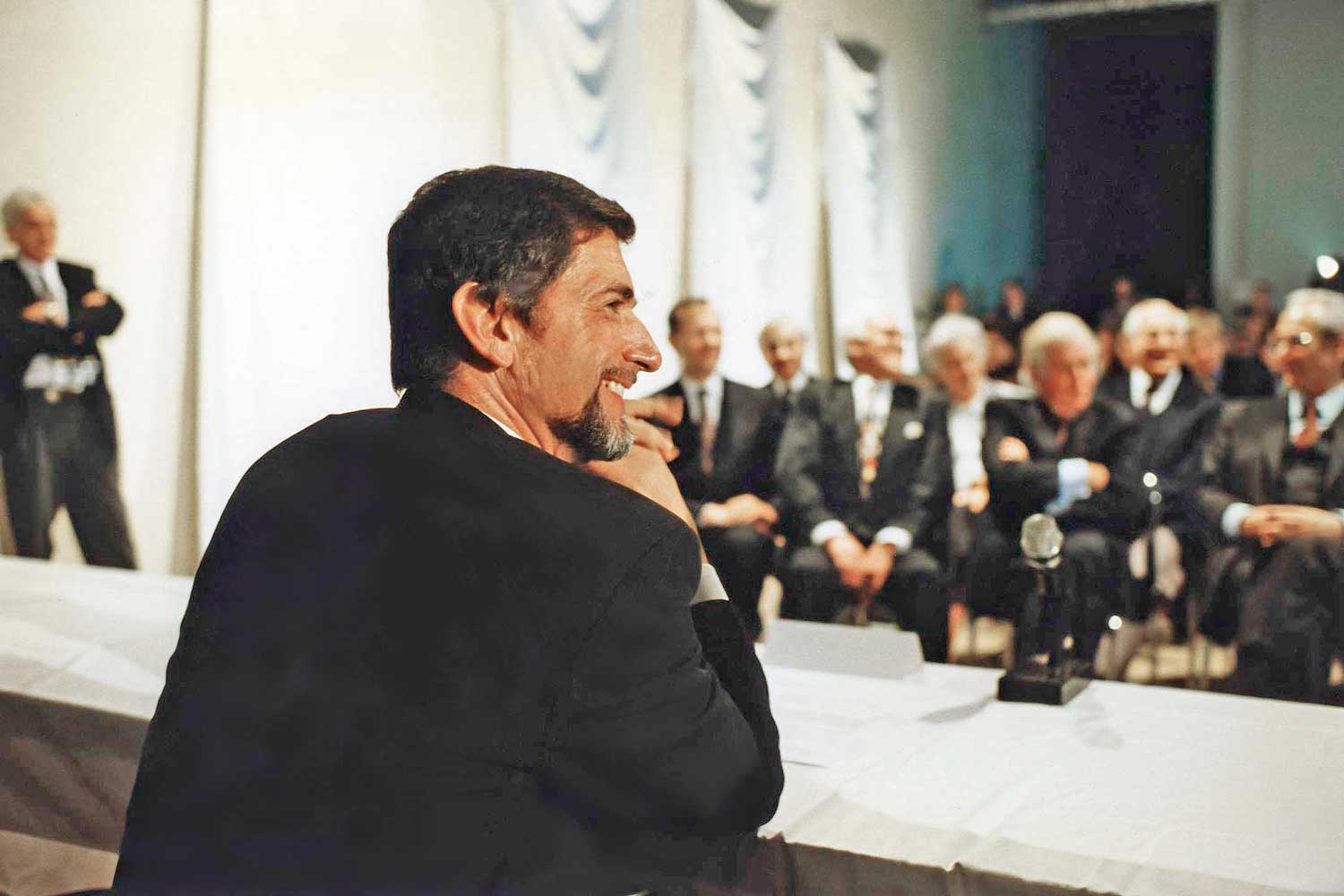
Günter Blümlein at the 24 October 1994 press conference for the launch of A. Lange & Söhne
The watches were large, heavy and remarkably designed, and three out of the four models featured a never before seen complication — the A. Lange & Söhne outsize date or, in German language, “Das Lange Großdatum.” Overall, 123 watches were made initially for the 1994 launch, all in yellow gold cases, which happened to be the favorite material of Walter Lange. The Lange outsize date itself was hailed as a groundbreaking and sophisticated complication; it would soon be adapted and used by many other watch companies.
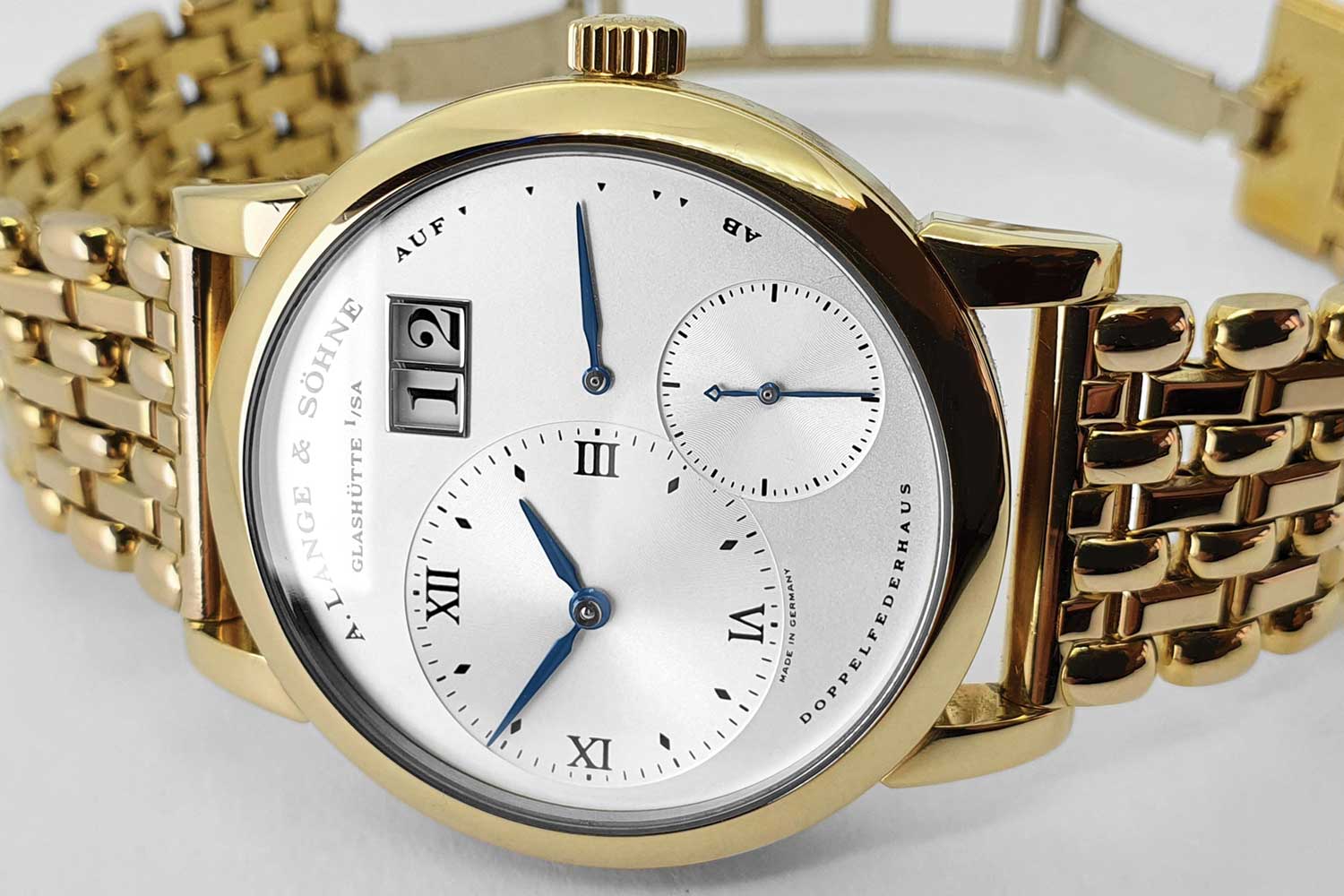
A. Lange & Söhne 1994 Lange 1 on a Wellendorf bracelet
With the rebirth of A. Lange & Söhne, the entire mechanical watch industry also received a completely new standard in terms of the finishing of movements produced in larger series. Each component of Lange’s movement, regardless of whether it is visible on the outside, is decorated with its own specific type of finishing — including Glashütte stripes, perlage, straight graining, circular graining and chamfering — achieving perfection right down to the last detail.
The underrated early Lange 1
Despite acclaim for the immaculate finishing of their movements, for many years after the rebirth of the brand, the watches of A. Lange & Söhne remained a niche product. This might be due to how expensive the watches were, and the fact that A. Lange & Söhne had to reestablish its credibility among a new generation of collectors and enthusiasts; the company’s hiatus during the Soviet era meant that many were not familiar with the brand. For almost two decades, the value of Lange watches on the secondary market were lower compared to the retail prices.
Take the early Lange 1 ref. 101.002. For a long time, this was a watch that gave collectors many reasons to ignore it. It was priced exceedingly high, and its case was made of yellow gold — a material that had fallen out of fashion. You also couldn’t see what many people would consider the most beautiful thing about an A. Lange & Söhne watch, namely its movement, because this Lange 1 has a closed, solid caseback like many watches of the first series. For these reasons, and the fact that the brand simply didn’t have too long a tradition in modern times, it was often a dilemma for collectors when deciding whether to purchase an early Lange 1.
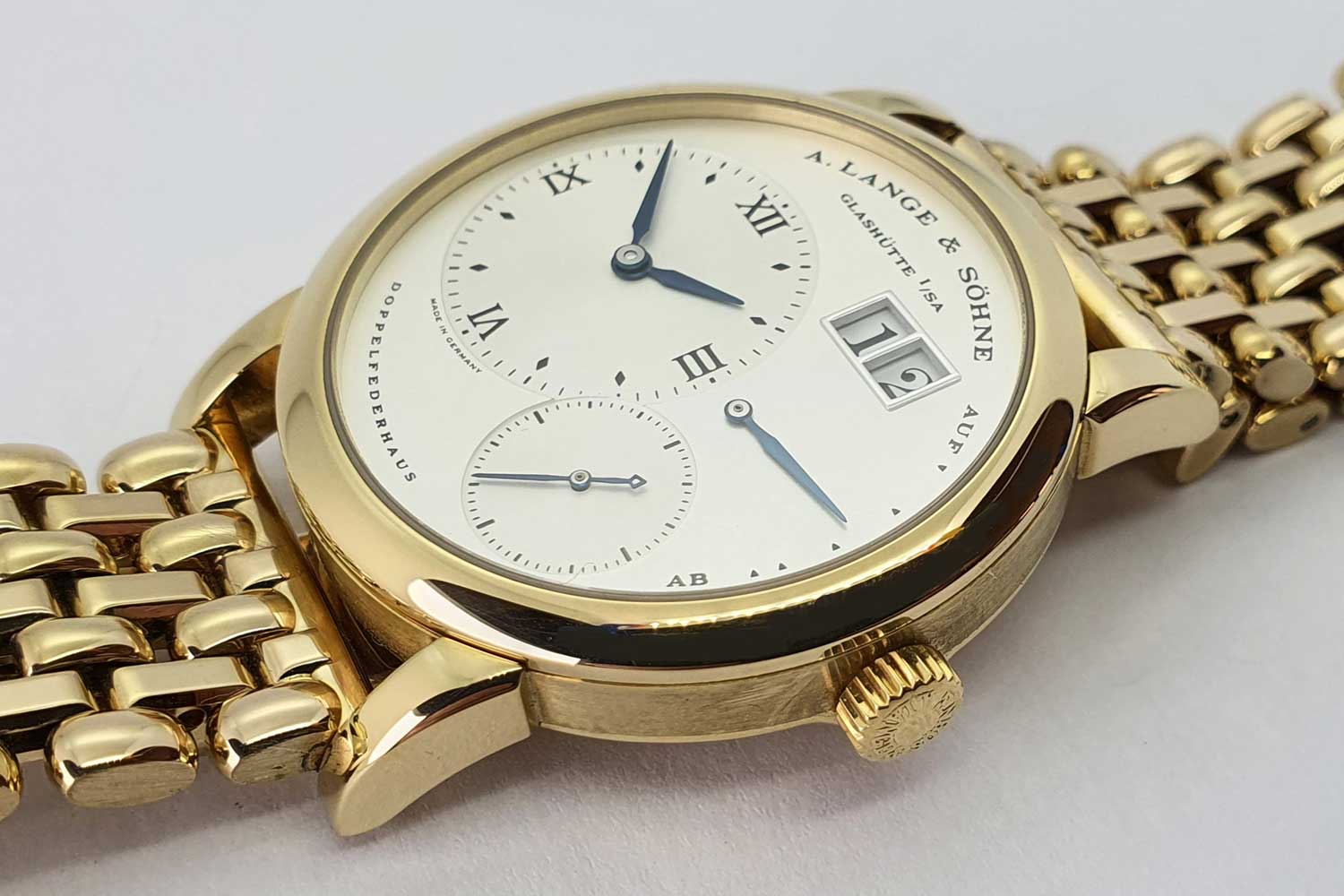
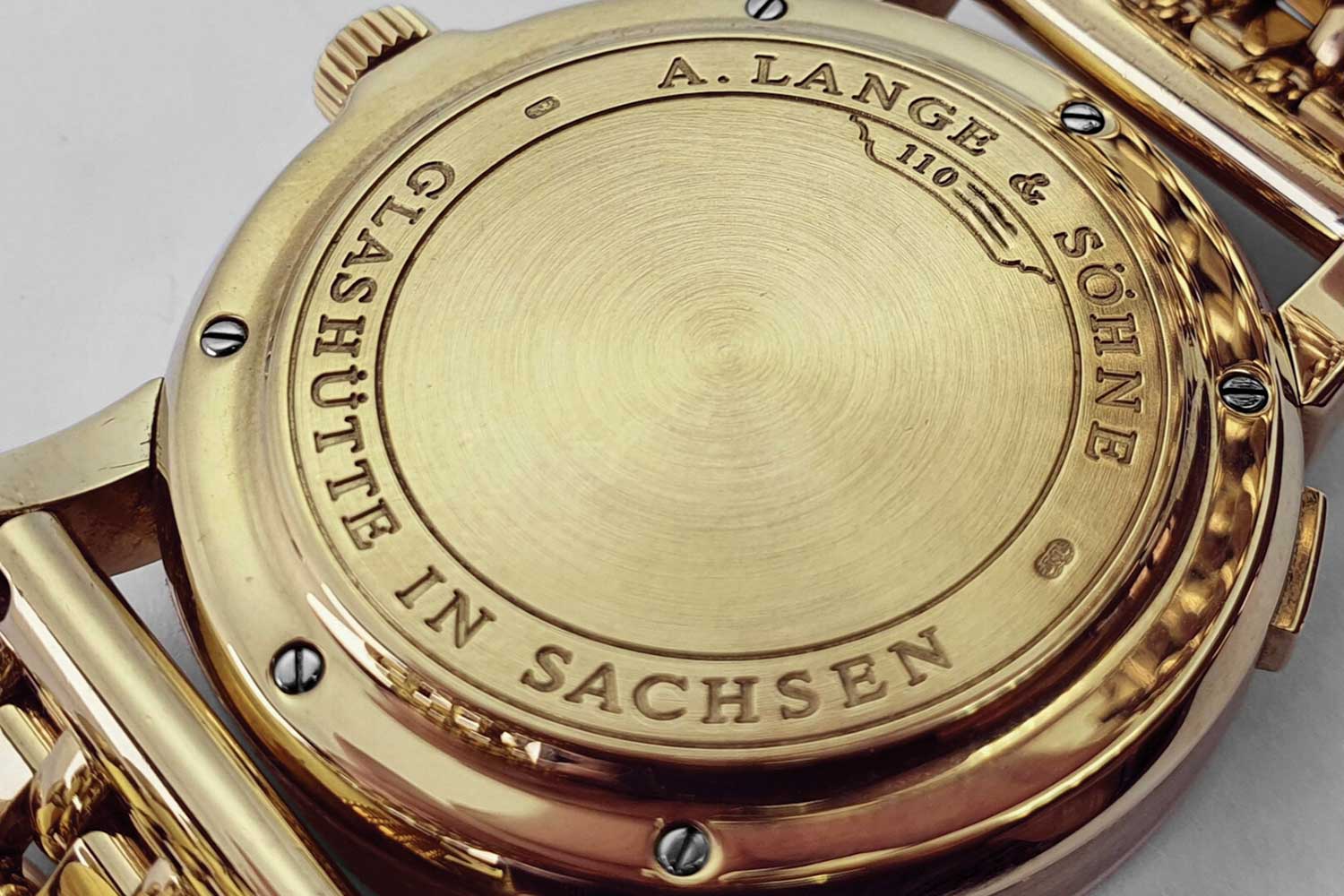
Much has already been written about the distinctive — some say peculiar — design of the Lange 1. There is no need to repeat it at length here. The off-center dial design, the separated indications and the outsize date of the Lange 1 was — and still is — fascinatingly offbeat yet beautiful at the same time. A comparison with a classic and exclusive dress watch of the same era from Switzerland, the Patek Philippe Calatrava reference 3919, shows how aesthetically different the Lange 1 is. The Calatrava ref. 3919 is the epitome of minimalistic elegance with a refined slim case and a clean, legible dial, whereas the Lange 1’s striking asymmetrical dial with carefully proportioned time displays and brand-new outsize date is a study in Saxon precision watchmaking.
Most of my friends were unenthusiastic about the style of the Lange watches, but for me, it was the start of a long journey to acquire one of the earliest Lange 1 models.
My love affair with the early Lange 1
I was a student in 1994 when A. Lange & Söhne returned to the watchmaking world. Collectors and friends had expected the rebirth of traditional pocket watches or chronometers from A. Lange & Söhne, but the brand came back with wristwatches only. And what’s more, each Lange wristwatch easily cost four to five times more than a Rolex.
Back in the day, it was totally impossible — even in my wildest dreams — to blow out 27,000 Deutsche marks on a watch. That was the price of the Lange 1 at launch; it was also the money for three to four average student cars or the earnings of a student in two years. I resigned myself to the fact that I was not able to purchase one yet, and resolved to save up. At the same time, I started to collect images of this watch generation from magazines and auction catalogs, and tried to build up an archive of known owners and rare appearances of the early Langes. I followed every public move of the sale of an early Lange 1, passed by every tempting offer of any different execution of a Lange 1 (rose gold, luminous, boutique edition, moonphase, etc.) As fate would have it, I came across two closed caseback executions at German watch dealers. One of the Lange 1 watches I noticed was fitted with a Wellendorff bracelet — it was fully integrated to the case and had a Milanese-style design.
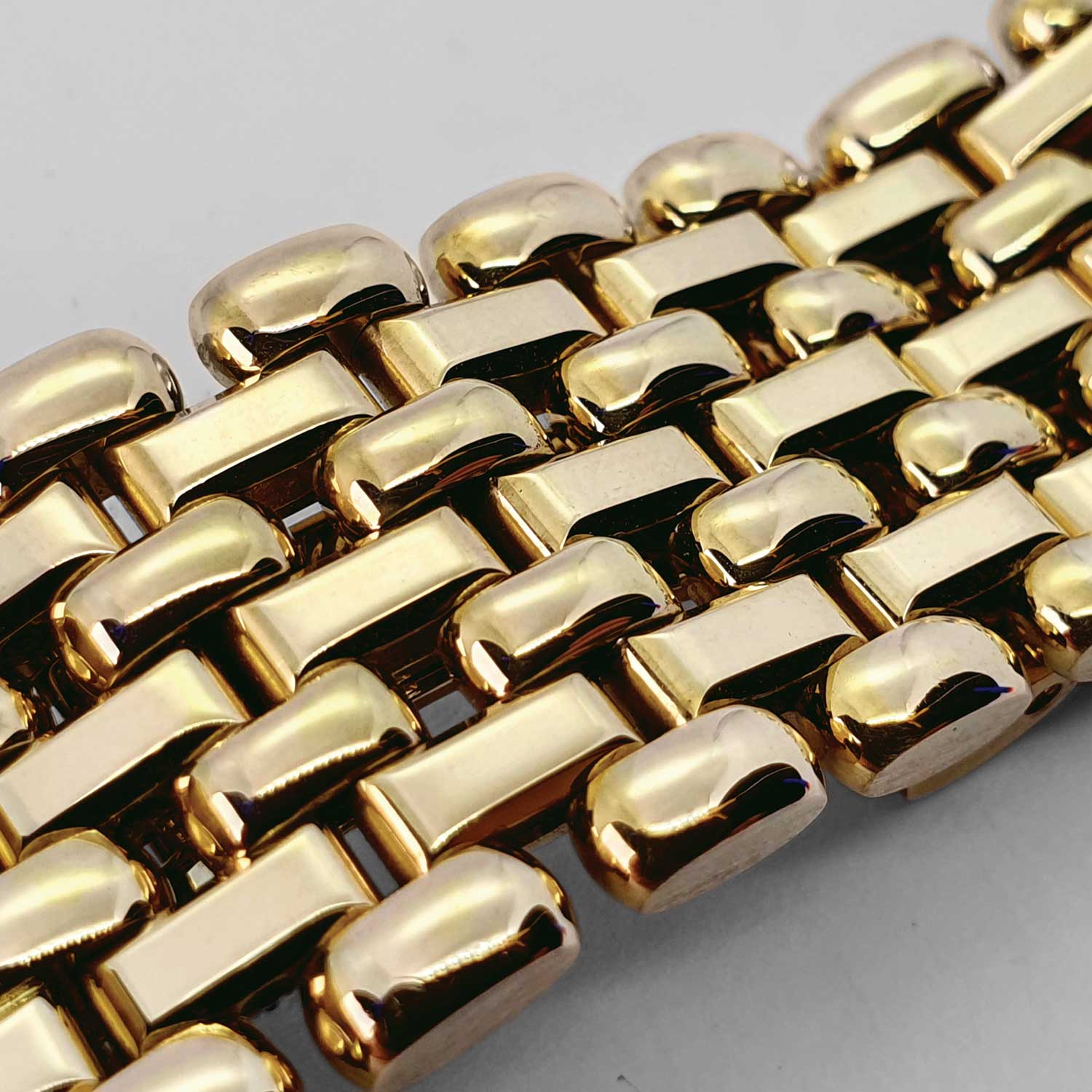
As I said earlier, as an enthusiast in a world of highly priced watches from the top brands, you just had to get used to the idea that you couldn’t own the things you found really beautiful. Basically, back then, there was only one “barrier” between me and the early Lange 1: the purchase price. Although the Lange 1 is not a rare watch — indeed, Lange 1 watches have appeared at many dealers and selling platforms and were very reasonably priced over a long period of time — I’d always wanted something very special: a watch from the first series. This was either a stainless steel Lange 1 (otherwise known as “mission impossible”) or a very early yellow gold Lange 1 with a closed caseback, full papers, all documents, the old inner and outer box, and an all-original, full length Wellendorff bracelet — now, wouldn’t that be nice!
The solid precious metal bracelets for A. Lange & Söhne were made by the famous German jeweler and family-owned company Wellendorff, located in Pforzheim, Germany. They came as an 18K yellow gold “beads of rice” design bracelet with four- and three-row elements in a regular pattern, a small folding clasp, and a hidden lock with a deep engraving of the single word “Lange“ and signed with the small Wellendorff logo.
Why Wellendorff? It is important to know that after Walter Lange’s separation from A. Lange Pforzheim, he joined the Wellendorff company in Pforzheim as a representative in the jewelry industry. This might be the reason A. Lange & Söhne decided to equip its early watches with solid bracelets made by Wellendorff in gold or platinum. Today, A. Lange & Söhne no longer provides watches with solid Wellendorff bracelets, as the demand for them has been negligible.
In my opinion, the beauty and peculiarity of the early Lange 1 watches best define the character of the collection. After extensive research, I eventually decided to zoom in on the reference 101.002 as my grail watch. This model has a silver colored dial with blued steel hands, and it can be identified, firstly, by its use of the smaller, sans-serif typeface. The sans- serif “Made in Germany” on the dial looks very unobtrusive and quite simple for a dial created by such a luxurious brand. The use of the sans-serif font in this reference is unusual since A. Lange & Söhne is so well known for its beautiful serif typefaces. Secondly, a different spacing of the letters of “I / SA” (which stand for “In Sachsen“ or “In Saxony”) can be observed. Compared to later executions of the Lange 1, there is more space between the letters and the “ / ”. Thirdly, the German umlaut (Ü and Ö) dots sit higher on top of the letters U and O. Fourthly, the two outsize date windows are made with silver frames around the two digits (they are not made of gold).
I was particularly smitten by the full silver dial of the Lange 1 reference 101.002, which was in contrast to the champagne colored dials of other early Lange 1 models. The ref. 101.002’s dial indicators, markings, numerals and typefaces are all printed in black without any golden inlays, as compared to the ref. 101.001 and subsequent references of the Lange 1. Another aesthetic detail that I found very striking was that the reference 101.002 (and also 101.022) came equipped with blued steel hands (not gold), which made the dial very similar to the extremely rare Lange 1 ref. 101.027X with a blue-on-silver dial that served as an inspiration for the Lange 1’s 20th anniversary watches — not limited edition watches but rarely officially displayed in catalogs.
The case size of the original Lange 1 was 38.5mm, which was large compared to the usual 34mm or 36mm cases back in the day. The Lange 1 has always been a huge and heavy watch. Is this too German? Maybe. The early Lange 1 reference 101.002 has a closed, solid 18K yellow gold caseback. This ironically means that you cannot see the beautiful A. Lange & Söhne movement. I will come back to this later.
Not commonly known is the fact that the case of this Lange 1 model was not made in Germany as one might think, but in Geneva, Switzerland, with the inscription on the inner part of the case lid: “Case Produced in Geneva, Switzerland, for Lange, Glashütte.” The inner caseback is marked with the 18K gold Helvetia head and the two letters “CO.” This indicates that the case was produced by the casemaker Centror S.A. in Meyrin, Geneva. It is additionally marked with “18K 750,” the “Glashütte A. Lange & Söhne” company stamp and the two individual numbers to identify the watch: R 10x (this is the individual number for the movement), and 110.07x (this is the individual number for the case). The outer lid of the caseback is engraved with “A. Lange & Söhne” and “Glashütte in Sachsen“ and the individual number of the watch starting with “110.0xx.”
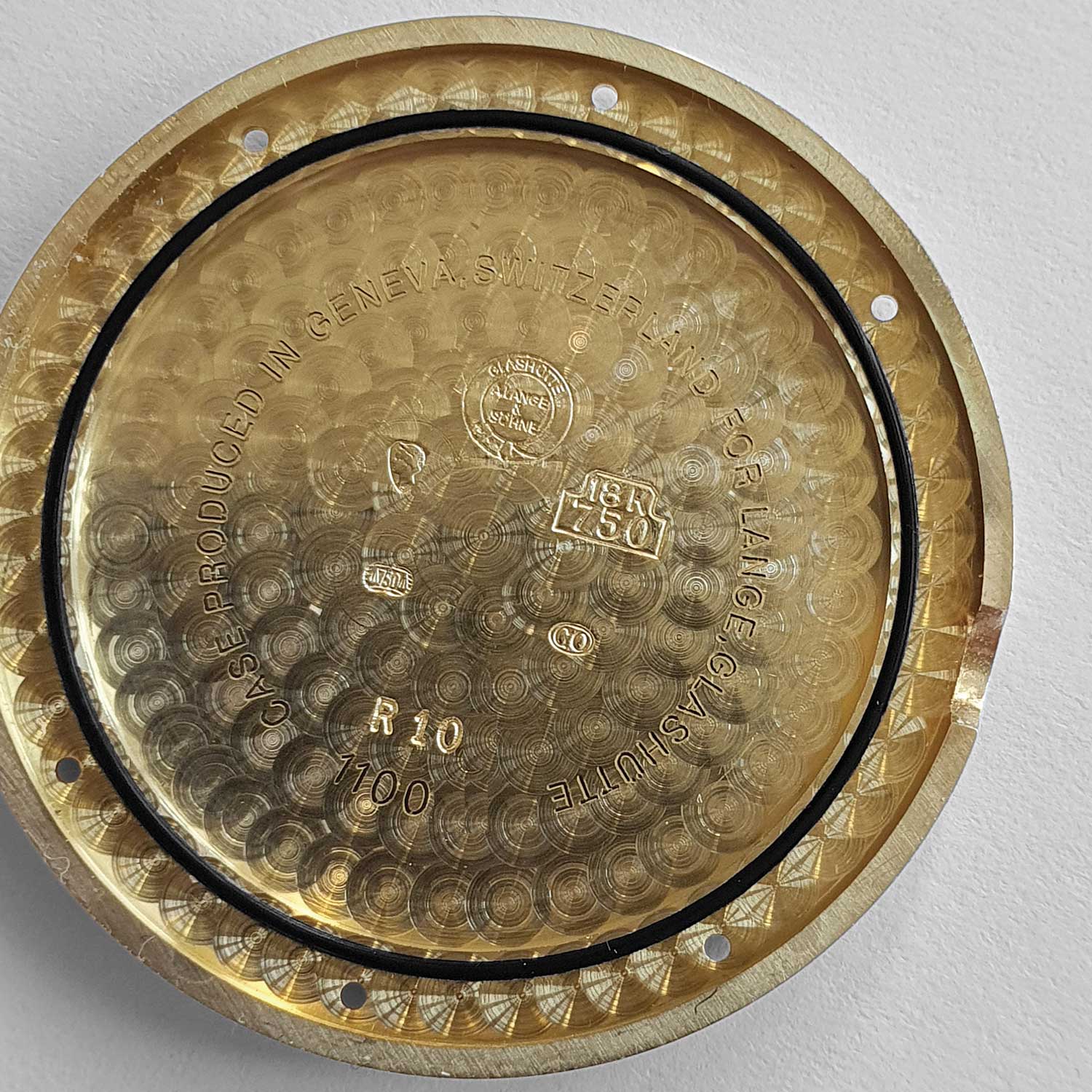
And yes, let’s now talk about the movement because, sorry, but nobody will buy a Lange without first asking about the best part of the watch. The movement in question here is the caliber L901.0, a manual wind with twin barrels (hence the word “Doppelfederhaus” on the dial). It has the characteristic Glashütte three-quarter plate in German silver. This caliber was later succeeded by the caliber L121.1 in 2015.
Even though I always knew what I wanted to own someday, the search took me a long time. After some years, I finally succeeded in finding the rare Lange 1 reference 101.002 with a solid caseback. The watch I was eyeing was by far the cheapest offer I had seen, because the dealer’s opinion about it seemed clear: “Nobody will buy such an unusual Lange 1 without even seeing the beautiful Glashütte movement. See the other executions. But for this early one, I can make you a special discount.”
Obviously, I had found the right watch, and the right place and dealer. He did not recognize the potential of the early Lange 1. So, I finally bought my grail yellow gold Lange 1. This watch was manufactured in 1994, and it was sold in January 1995. The document bears the name of the reseller — the jeweler Hellmut Wempe of Hamburg, Germany. It has a very low case and movement number, and it was sold to me on the original black leather strap with a gold A. Lange & Söhne pin buckle and the Lange retaining bar. The watch is officially registered in the A. Lange & Söhne archive in Glashütte, Saxony. Finally, the first part of my journey was complete.
Now came the search for the perfect bracelet to go with my watch. The bracelet for the early Lange 1 reference 101.002 shown here was bought later after a long period of time searching for an original Wellendorff bracelet on an early Lange 1 watch.
A 20-year quest ends in success
Finding an excellent condition early Lange 1 at the right price is not easy. But finding a Wellendorff bracelet is even more challenging, like winning a lottery. They are much rarer than early A. Lange & Söhne watches, and most of them were made in either white gold or platinum. Only a few preowned watches are sometimes equipped with the yellow gold bracelets. I remember that I saw one on a Calendar watch, and one with a smaller 19mm lug width for the Saxonia, but for years I could not find a single 20mm bracelet that would fit the case of a Lange 1. I got to know some people who had some watches on this bracelet, but no one was ready to separate the bracelet from the watch. What about auction houses? Wellendorff bracelets are extremely expensive when sold separately at auctions or dealers — more expensive than a watch alone!
Years went by. After a seemingly fruitless hunt to find a gold Wellendorff bracelet, I clicked on a dealer’s page by chance on a random day to look for “new offers” and, out of the blue, there it was: a superb Wellendorff bracelet, 20mm, obviously separated from a Lange 1. The dealer’s opinion was very similar to the argument I had heard a long time ago when I bought my solid caseback Lange 1. This time, it was exactly these words that delighted me: “Nobody will buy such kitsch in heavy gold. It is much easier for me to sell any Lange 1 on a classic leather strap. I never thought to find a buyer for these 150 grams of gold so easily. Have fun with it. It might be rare.”
I never agreed faster on a deal to buy a watch bracelet. Finally, the solid caseback Lange 1 and the original Wellendorff bracelet were united! The acquisition of this timepiece has been a long and arduous journey for me, although one could also tell the story much more briefly, as I once experienced at a Lange event. I had a brief conversation with the CEO of A. Lange & Söhne, Wilhelm Schmid, who stood next to me on the sidelines at an event. “You have a very nice watch. Great,” he said.
I replied, “Oh, thank you very much!”
To which he asked, “Open back or closed back?” “Closed back,” I answered.
He said, “Then this must be one of the very first ones we made. Never give it away!”
Early Lange 1 Model Numbers
The reference 101.001, released in 1994, was the very first execution of the Lange 1. This was the yellow gold and champagne colored dial early Lange 1. The ref. 101.001 indicated a solid caseback, while the ref. 101.021, which came a year later, marked an open caseback.
The reference 101.002, also released in 1994, featured blued steel hands, painted numerals, and a silver date frame on a silver colored dial. The open caseback version of this model was dubbed the ref. 101.022. Incidentally, for the Lange 1’s 25th anniversary in 2019, A. Lange & Söhne released the ref. 191.066, which also had blued steel hands, a silver colored dial and a silver date frame, with the addition of a blue script for the time and date indications.





